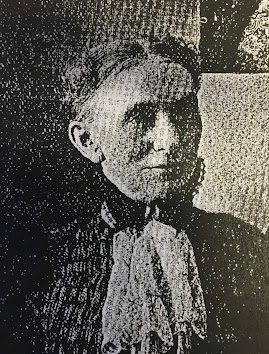
Friday, March 30, 2012
Woof, Woof, Where the Heck Did Mom Go?

Tuesday, March 27, 2012
Springtime in Eden

Dear George,
The Ohio River Overlook in Eden Park is one of my favorite Cincinnati places. When our son J was a kid, we’d go on family outings there, and now we do the same with our grandkids. It’s the starting point for sheepdog hikes in Eden Park and a must stop when we’re showing visitors around town. This year spring arrived in Cincinnati weeks earlier than normal. We have a lot of flowering trees that have turned the parks into a festival of colors. Here’s how the Eden Overlook is doing these days.
Love,
Dave












Friday, March 23, 2012
Which Best Place Is The Best?

Electric Square, Menominee, MI (JML photo)
Dear George,
When we were young, my father always claimed that Menominee and the U.P. were the best places to live. Our house was out in the country, and my parents loved nature. The scenery was beautiful, the air was clear, sunsets beautiful, the forest and the river were right outside our door, and we spent much of our leisure time swimming, boating, and camping. My mom gardened, my dad painted wildflowers, our dogs ran free. The town itself was right on Green Bay, the epitome of Michigan’s Water Wonderland. People in our small town were friendly, honest, helpful, and non- pretentious. When my dad would run across a news report that the population of the U.P. was declining, he’d respond that people were foolish and the more people that left, the better it would be for the rest of us. We may not have been as totally convinced as my dad, but we all agreed that Menominee was a special place.

Downtown Yellow Springs, OH
At eighteen I left home for Antioch College in Yellow Springs, a little college town of 3500 in southwestern Ohio. At first Yellow Springs seemed pretty rinky-dink. It had a two-block business district, one gas station, one drugstore, one grocery store, one hardware store, and one traffic light. It didn’t take long, however, to discover how idyllic the Yellow Springs village was. Antioch had a strong “beatnik” culture which gave the whole community an avante garde atmosphere. The town was home to numerous artists and writers. The Little Art Theater had a reputation as the best foreign film cinema in the Midwest, and Com’s Tavern and the Highway 68 Drive-in soon became late-night havens for my friends and myself. By the time I was approaching graduation, Yellow Springs had become home and the prospect of leaving was traumatic. Menominee had been good, but I’d concluded that Yellow Springs was the best.

Liberty St., Ann Arbor, MI
Katja and I married and moved to Ann Arbor for graduate school. I was heartbroken and wary. I was skeptical about going to a Big Ten school, and I was sure that, as dedicated Antiochians, we would never feel at home in a collegiate place like Ann Arbor. All of those worries vanished within weeks. The University of Michigan was an awesome institution, and the city of Ann Arbor was remarkable. The streets surrounding campus were full of bookstores, cafes, movie theaters, and elegant shops like Artisans and John Leidy’s. Katja and I became U of M football fans, and we decided that life in Ann Arbor was wonderful. Menominee and Yellow Springs had been good, but Ann Arbor was the ultimate.

Cincinnati skyline
In 1966 I took a faculty position in Cincinnati, and we were distraught about leaving Ann Arbor, our first married home. Cincinnati’s campus area business district couldn’t hold a candle to Ann Arbor’s, and the local rightwing media turned us off. All of our angst turned out to be temporary, however. Compared to Ann Arbor, which now seemed like a small college town, Cincinnati was truly a big city -- far more complex, diverse, and interesting. We discovered Cincinnati’s panoply of fine restaurants, including world-class establishments like the Maisonette and Pigall’s. Cincinnati is one of the premiere cultural centers of the Midwest because of its symphony, opera, ballet, chamber music, and theater. It has fine art museums; one of the nation’s best zoos; professional and college sports; seven hills, interesting architecture, and desirable neighborhoods. After a while we came to realize that living in a big metropolis was much more exciting than anywhere we’d lived before. Menominee, Yellow Springs, and Ann Arbor had been excellent in their own ways, but Cincinnati topped them all.
When I thought about all this recently, I got confused. It dawned on me that, wherever we happened to be currently living, I’d thought that that place was the greatest. How can one ever find the truth? Luckily I ran across a website called “City-Data.com” that offers an amazing amount of information about all the towns and cities in the U.S. I used it to look up facts about Menominee, Yellow Springs, Ann Arbor, and Cincinnati. I compared the four places by geography, climate, population characteristics, economy, and various amenities. Which place, I wondered, would objectively turn out the best? A scientific approach would surely give the answer.
The detailed results from City-Data.com are in the appendix below. I wasn’t surprised to find that each of these desirable places ranked number one on various dimensions. In fact, there was a three-way tie between Yellow Springs, Ann Arbor, and Cincinnati. Each was ranked number one on three different dimensions. Here’s where these three places get their top rankings,
respectively:
Yellow Springs: #1 on per capita income, % of residents married, and estimated % of lesbian and gay households.
Ann Arbor: #1 on educational level of residents, lowest unemployment, international diversity (% foreign-born).
Cincinnati: #1 on county population growth, restaurants per capita, and low adult obesity.
Well, what about Menominee, you ask? As my dad would have predicted many years ago, it pretty much sweeps the awards. It winds up #1 on 16 of the 25 dimensions I looked at: Low population density, low commuting time, low poverty rate, low cost of living. Greatest water area, highest air quality, coolest summer temperatures, lowest rainfall, fewest natural disasters. More Swedes, more Lutherans, more religious affiliation, more bars per capita, more pastie shops, more deer, fewest violent crimes.

Green Bay shoreline and Menominee Marina
Admittedly, not all of these Menominee attributes translate directly into quality of life. Like Garrison Keillor on Prairie Home Companion, we have a certain affinity for Scandinavians, Lutherans, and pasties, so we tossed those into the mix. Deer population might seem low in relevance, but when you’re from the U.P. it’s a major priority. Menominee’s number one ranking on both religion and bars may be puzzling at first, but when you’re familiar with Menominee culture it makes perfect sense. It appears that my dad was right after all. Statistics don’t lie -- Menominee is practically the best place there can be. It just goes to show – those early impressions often turn out to be the most accurate.
Love,
Dave
P.S. If you want to see why Seattle, Santa Cruz, New Orleans, Philadelphia, East Lansing, Princeton, Rochester, New York City, Charlotte, or your home town are great places, just go to www.city-data.com. You’ll be pleasantly
surprised.
APPENDIX (Rank order of four cities and their scores on 25 dimensions):
Low population density (per sq. mi.): Menom (1582), YSprgs (1725), AnnArb (4178), Cincy (4271)
County pop. change (2000-10): Cincy (+0.5%), AnnAr (-1.0%), Menom (-10.3%), YSprgs (-12.9%)
% Water area (vs. land): Menom (5%), AnnArb (.03%), Cincy (.003%), YSprgs (0.0%)
Travel time to work: Menom (9 mins), AnnArb (19 mins), Cincy (20 mins), YSprgs (21 min)
Per capita income: YSprgs ($32K), AnnArb ($27K), Cincy ($24K), Menom ($21K)
Low poverty rate: Menom (15%): YSprgs (18%); AnnArb (21%): Cincy (26%)
Unemployment rate: AnnArb (7.5%), Cincy (8.6%), YSprgs (8.9%)(, Menom (9.0%)
Cost of living (US Ave = 100): Menom (77), Cincy (90), Yellow Springs (92), AnnArb (92)
% Married: YSprgs (53%), Menom (51%), Cincy (34%), AnnArb (34%)
% BA degrees or higher: AnnArb (69%), YSprgs (59%), Cincy (27%), Menom (13%)
Diversity (% foreign-born): AnnArb (17%), YSprgs (3.8%), Cincy (3.8%), Menom (0.8%)
Swedish ancestry: Menom (10%), AnnArb (>2%), Yellow Springs (>2%), Cincy (>2%)
Lutherans: Menom (22%), YSprgs (5.3%), AnnArb (5.2%), Cincy (>2%)
Lesbian & gay couples (est.): YSprgs (2.4%), AnnArb (0.9%), Cincy (0.6%), Menom (0.2%)
Affiliated w/religious congregation: Menom (69%), Cincy (49%), YSprgs (34%), AnnArb (33%)
Violent crimes (per 10K residents): Menom (11.7), YSprgs (13.9), AnnArb (18.6), Cincy (44.9)
Adult obesity rate: Cincy (26.6%), AnnArb (27%), YSprgs (28.6%), Menom (28.8%)
Temperature (highest monthly ave.): Menom (81), AnnArb (83), YSprgs (84), Cincy (87)
Rainfall (highest monthly ave.): Menom (3.6”), AnnArb (3.7”), YSprgs (4.4”) Cincy (5.1”)
Air Quality Index (low = better): Menom (9), AnnArb (32),YSprgs (39), Cincy (42)
Natural disasters (e.g., floods): Menom (4), AnnArb (8), YSprgs (9), Cincy (12)
Restaurants (per 10K residents): Cincy (7.5), AnnArb (7.2), Menom (7.0), YSprgs (5.6)
Bars (per 1000 residents): Menom (1.1), YSprgs (0.6), AnnArb (0.3), Cincy (0.2)
Pastie Shops: Menominee (3), Ann Arbor (0), Yellow Springs (0), Cincinnati (0)
County deer population: Menominee (46K), Ann Arbor (26K), Cincinnati (8K), YSprgs (6K)
Main Sources: www.city-data.com; www.yellow-pages.us; Google Images
G-mail Comments
-Mary B (3-25): You got me going on this one, because I'd said my entire adult life I'd never live in Florida; then family circumstances brought me to Gainesville in 2000. My sister-in-law reassured me with that year's #1 ranking of Gainesville. Over the years that hasn't always been true, but in 2007 we were again ranked #1 by Sander and Sperling on economy, cost of living, climate, education, health, crime, transportation, leisure, and arts and culture; more specifically, "the presence of 'college town amenities' such as athletics and museums." Looking for more recent data, I discovered we were ranked on March 17, 2011 among the Ten Happiest Cities! I'm glad my personal experience is matched by statistics. I've grown to love all those things about Gainesville. Yet... I still miss Cincinnati. Thanks for the memories.
-Jennifer M (3-25): the website you refer to is crazy! what a lot of information!
Monday, March 19, 2012
Bloganoia

Dear George,
While I don’t think I’m any more paranoid than the next guy, I do have occasional small episodes of unrealistic suspicion and fear about this or that. Lately these have become more centered on the Internet. The more experience I’ve had with my blog, the edgier I’ve become about where these postings go and who gets them. Even though my blog is set up a publicly available, I naively think that it’s going mostly to family and friends. But that’s an unfounded assumption. I became acutely aware of this when I wrote a satirical piece about a local cemetery, then got back a lengthy e-mail response from the cemetery’s president within 24 hours. One of my knowledgeable friends explained that many organizations pay a fee to automatically receive any web content that mentions their name. A few weeks later I wrote a humorous account of my first year of college, then discovered that the college Alumni Association had referred it to thousands of readers. I posted a story about my hometown, and the president of the Chamber of Commerce replied. Most recently I heard back from the great grandson of a man who I’d described as committing a violent criminal act. All of this seems harmless enough, but it does make me nervous about writing for an unknown, hard-to-predict audience.
My wariness was reinforced when I read recently in the New York Times about government efforts at Internet surveillance. It’s pretty well-known that the Department of Homeland Security (DHS) monitors the Internet for information about potential threats to public safety, e.g., terrorist attacks. What's not well known is that the DHS also monitors political reactions to government proposals that have "homeland security implications" or "reflect adversely on the U.S. government." According to the Times (1-13-12), a nonprofit advocacy group used the Freedom of Information Act to obtain nearly 300 pages of documents about the DHS's monitoring program. In a 2009 test, the Department paid a contractor to monitor the Facebook postings, Twitter messages, blog content, and reader comments about a Washington Post article by the residents of Standish, MI, to see how the residents were reacting to a proposal to move Guantanamo Bay prisoners to a local prison. The contractor recorded personal identifying information from Facebook, Twitter, etc., but didn’t include such information in the final reports. For example, a quote from Twitter would refer to "a Twitter user" rather than citing a specific person by name. Asked about the Standish report, a DHS spokesperson said it was simply an example and had been removed from their handbook because it “does not meet our operational requirements or privacy standards” which “expressly prohibit reporting on individuals’ First Amendment activities.” However, even if Homeland Security says they are not out to get me personally, it still worries me. (Dear Homeland Security monitor: If you are analyzing this paragraph, it’s all just in fun.)
Every once in a while I Google my own name to see what turns up. When I did this recently, the first hit was a web-site I’d never heard of which says it is designed to help people “find and connect with one another.” From it I learned that I was a married, Protestant, white male in my mid-70’s, with a Democrat political preference. It listed my wife and son by name; gave an aerial photo, street location, and appraisal value of our house in Clifton, as well as listing the monetary values of all my individual neighbor’s houses in a two-block radius. My life style interests were specified as including: owns dogs, enjoys the outdoors, likes music, reads about world news and politics, cares about healthy living, is a collector, collects antiques, and enjoys family activities and reading. It also says I am sensitive, intuitive, desirous of security and comfort, clingy, protective, value marriage, and have trouble letting things go. Most of these are spot on, and my impression is that the web-site has broader knowledge of me than do many of my acquaintances (or even myself in one or two instances). I tried searching the site for a dozen family members and friends. Except for our three-year-old grandchildren, everyone else was listed there, with varying amounts of personal and mostly accurate information. The facts I found about myself are just a teaser of what’s available through the site. If I pay them $2.95 a month I can find out my own or anybody else’s exact age, phone number, e-mail address, occupation, education, detailed financial information, detailed property information, economic health rating, and information about the person from 81 social media sites (e.g., Facebook, Google+). Perhaps this amazingly well-informed site sometimes actually does help people “connect” with one another. But it also helps marketers, real estate agents, prospective employers, banks and credit agencies, snoopy neighbors, online suitors, identity theft criminals, probation officers, mothers-in-law, newspaper reporters, and a wide range of others who may be “connecting” in less than preferred fashions. No wonder I’m feeling more paranoid.
Love,
Dave
SOURCE: New York Times, "Federal contractor monitored social network sites," Jan. 13, 2012) (http://www.nytimes.com/2012/01/14/us/federal-security-program-monitored-public-opinion.html)
G-mail Comments
-Gayle C-L (3-19): David, Pretty amazing. They are watching you for sure. You better be careful! Lol. G
Thursday, March 15, 2012
Little Yellow Beauties and Their Shocking Secret

















Sunday, March 11, 2012
Hey, Where'd That Baby Come From?

Dear George,
I don’t understand all this political fuss about contraception. It’s like we’ve fallen into a time warp and returned to the early 60’s. Whatever the case, it has reminded me othat Katja was a pioneer of sorts in the whole birth control enterprise. The pill was developed in the 1950’s and initially tested on women in Puerto Rico in 1956. In May 1960 the FDA approved its use in the U.S. Katja and I got married that year and moved to Ann Arbor which turned out to be one of the early sites for American distribution and further testing of the pill. Katja signed up for the research as soon as they announced it. Our fantasy at the time was that she was the very first mainland user of the pill, but that’s not exactly true. Actually, the first U.S. research was done in Massachusetts. Katja did agree to being a research subject as part of her receiving the pill. We’d go over to the local Planned Parenthood clinic which occupied a second floor suite down a narrow alley near downtown. It was dark and secluded, with just a tiny sign near the door, a sort of secret, back alley place. I’d escort Katja up to the reception area, then go back downstairs and wait in the shadows, smoking cigarettes and fidgeting. I was nervous about Katja being a test subject for such a new, powerful drug, but she was fearless.
The pill, of course, was revolutionary in that it provided women newfound security and unprecedented control over pregnancy. Katja took the pill faithfully during our stay in Ann Arbor, then continued when we moved to Cincinnati for my university job. After a couple of years we went to a holiday party for grad students and faculty at our close friends Clyde and Ann M’s apartment. In the midst of the revelry, Katja quieted the crowd and said she had something important to tell everybody. She paused, blushed a bit, then came forth with her stirring announcement: “Nobody knows this yet, but I’m pregnant!” The group broke into applause. Nobody was more astonished than I. “But you’re on the pill,” I stammered. “No I’m not,” Katja said. “I stopped taking it months ago.” She reminded me that I’d suggested that we might want to think about adding maternity insurance to our university health insurance plan. She’d taken that as a cue that I thought it was time for us to have a baby. I mildly protested that perhaps we could have talked about it more explicitly. But Katja was certain that I would be happy. I mulled it over and decided I was.
Though she wasn’t enthusiastic about being pregnant in and of itself, Katja gritted her teeth and nature proceeded on course. Katja ate lots of pickles and chocolate ice cream. We went to natural childbirth classes every Tuesday night, and I was trained to help Katja regulate her breathing. When the moment finally arrived, we rushed off to Christ Hospital. I sat next to Katja’s bedside, repeating “breathe, breathe” as I’d been taught to do. “I am breathing, God*** it!” Katja shouted. The doctor decided it might be better if I retire to the waiting room. Katja was in there for a long time, sixteen hours in all. When she saw women being carted off to give birth who she knew had arrived after she, she’d holler out, “It’s my turn, it’s my turn!” Finally it was her turn, and, before we knew it, there was our tiny infant son. We’d debated between Barnaby and J*** if it were a son. I thought Barnaby had a lot of pizzazz, but Katja went for J***. We soon learned that her decision to discontinue the pill was the best of all times. Since it takes me forever to work through these big questions, it’s good that somebody opted to take action.
Contraception has advanced a lot since those early days, and there are many facts relevant to the current debate about health insurance coverage. Below are some of the details I’ve run across (the numbers in parentheses refer to sources listed at end). There are, of course, complex issues about religious freedom and women’s health rights. Nonetheless, I think one can make a strong case that all women should have access to contraception covered by their health insurance.
Love,
Dave
- Each year in the US there are about 4 million births, 1 million miscarriages or stillbirths, and 1.2 abortions. About 50% of pregnancies in the US are unintended. (5)
- Rates of unintended pregnancies per 1000 women per year vary by racial/ethnic group: 35, Non-Hispanic whites; 98, African Americans; 78 Hispanics. These differences correspond closely to patterns of contraception use. (5)
- On average, US women want only two children. To achieve this outcome, women must use contraceptives for roughly three decades. (3)
- Over 99% of US women of child-bearing age (15-44) who have ever had sexual intercourse have used at least one contraceptive method during their lives. This rate is virtually identical for Catholic women (98%). 93% of sexually experienced US women have relied on male condom use. 82% have used the pill. (5)
- 68% of sexually experienced Catholic women of child-bearing age, 73% of Mainline Protestants, and 74% of Evangelicals are using highly effective methods of contraception (i.e.., sterilization, the pill or another hormonal method, or the IUD). (2)
- More than 40% of Evangelicals rely on male or female sterilization, the highest rate among the various religious groups. (2)
- The most frequently used contraceptive methods by US women (2006-2008) are: the pill (28%), tubal sterilization (27%), male condoms (16%), vasectomy (10%), IUD (6%), and withdrawal (5%). (3)
· According to a recent CBS New Poll (May 2010) 52% of the public believes that the birth control pill has been one of the country's most significant medical developments; has made women's lives better (56%; vs. 9% worse), has made it easier for women to have careers (57%; vs. 1% harder); has made American family life better (50%; vs. 11% worse); can be used safely (64%; vs. 25%, No); and is effective (85%; vs. 5%, No). (1)
- Typical-use failure rates (i.e., unintended pregnancy) over a 12-month period vary by type of contraceptive: spermicides, 29.0%; periodic abstinence, 25.3%; withdrawal, 18.4%; male condom, 17.4%; pill, 8.7%; male and female sterilization, less than 1%. (5)
- Contraceptive choices vary sharply by age. The pill is the leading method for women under 30. Women 30 and older rely more on sterilization. (3)
- The costs of birth control vary by method, insurance coverage, and the type of drug or device. Recent estimates from US News (Mar. 5, 2012) are: the pill, $160-$600 per year; birth control patch, $160-$600 per year; condoms, averaging $150 per year; diaphragm, $60 a year, plus the initial doctor’s visit ($20-$200); IUDs, upfront cost of $500-$1,000, then $100 per year; sterilization, $1,500-$6,000. (4)
- Federal employees are guaranteed insurance coverage for contraceptives. (3)
- 90% of employer-based insurance plans cover a full range of prescription contraceptives (three times as many who did so a decade ago). (3)
- 27 states have laws requiring insurers to provide coverage for the full range of contraceptive drugs and devices approved by the FDA. (3)
SOURCES:
(1) CBS News Poll, "The Birth Control Pill: 50 Years Later." (www.cbsnews.com)
(2) Guttmacher Institute. “Contraceptive use is the norm among religious women” (Apr. 13, 2011) (www.guttmacher.org)
(3) Guttmacher Institute. “In Brief: Fact Sheet (June 2010)” (www.guttmacher.org)
(4) US News and World Report. “The Real Cost of Birth Control” (www.money.usnews.com)
(5) US Dept. of Health & Human Services, Centers for Disease Control and Prevention. “Use of Contraception in the United States: 1982-2008.” (www.cdc.gov)
G-mail Comments
-Gayle C-L (3-11): David, You are too much. I apologize for not responding to your letters ( which I Love ) But thankfully I have been very busy w the Princeton Spring Market. Finally closing some long over do properties. Lets talk soon. Lots of love... G








































































































































































